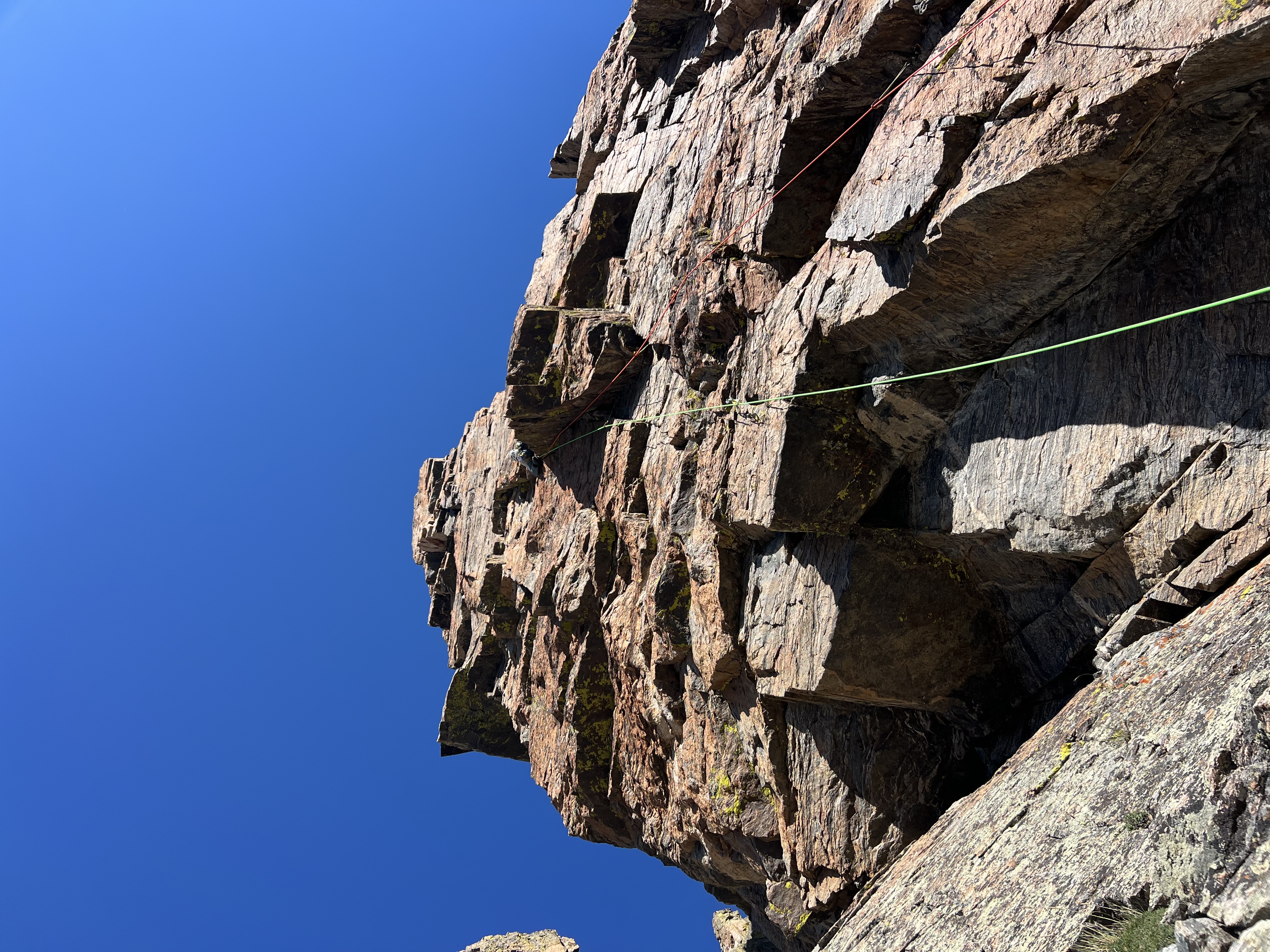
Do you climb with a Double Rope?
I’ve been asked this question a lot over the years, and my answer has evolved as I’ve climbed with people from various backgrounds and countries. This topic, like many others in climbing, depends heavily on climbing technique and heritage, which varies between different regions of the world. The double rope technique is something I consider essential for certain types of climbing, yet I see many climbers avoiding it due to perceived complexity or simply unfamiliarity with the system.
Understanding Double Rope Systems
Let’s start with defining what a double rope is. A double rope system refers to a dynamic rope that has double certification - it’s certified for both half rope and twin rope systems. It’s quite common that people use the term “double rope” but actually mean “half rope,” which is a bit misleading but most climbers understand the intended meaning.
Most European climbers are quite familiar with using half or twin rope systems when they go multi-pitch climbing, as it gives them the option to always rappel down every pitch they climbed up without taking any additional gear like a tag-line or Beal Escaper.
Some British climbers will choose to use a Half Rope system when they climb traditional routes (either single-pitch or multi-pitch climbs) as it offers them an easier way to manage rope drag without necessarily extending every piece with an alpine quick-draw.
This blog post doesn’t try to convince you to switch to using half or twin ropes every time you go multipitch climbing or trad climbing, but it does try to show you where it shines and encourage the reader to think about the tools in their quiver and to choose the best tool for the job.
Why Use Double Ropes?
Double ropes (typically 7-9mm in diameter) provide several advantages:
- Reduced Rope Drag - You can clip alternate protection points with different ropes, creating a more direct rope path
- Redundancy - As you have two ropes going between the belayer and the climber, you have redundancy simply because you have two ropes instead of one. If you choose to use a half rope system, the two ropes are not clipped to the same protection points and thus follow different paths on the rock face, which means they don’t touch the same sharp parts of the rock if they exist, arguably making the system even more redundant.
- Full-Length Rappels - You can rappel twice as far compared to a single rope, which is most important if you’ve climbed a full pitch rope length and need to retreat.
- Versatility - Ideal for wandering routes, multi-pitch climbs, and alpine environments

Half Rope System: Advantages and Disadvantages
Advantages
- Redundancy - You have less chance of both ropes getting cut in case of sharp rock, especially in a half rope system as the two ropes take different paths
- Better rope drag management - You can clip alternate protection points with different ropes
- Retreat options - You always have the option to rappel down the route if needed without carrying a rope that you don’t actually use for the whole climb up
- Reduced rope drag - By alternating which rope you clip to which piece of protection
- Fewer alpine draws needed - You might be able to use fewer alpine draws compared to quick draws
Disadvantages
- Heavier - Compared to just a single rope (however, you can share the load with your partner)
- More complex belaying - Managing two ropes as a belayer is a little more complex and needs to be practiced
- Mental workload - Managing two ropes as a leader and thinking which rope to clip when is a little more mental work compared to single or twin rope systems

Twin Rope System: Advantages and Disadvantages
Advantages
- Redundancy - Though less than half rope system as both ropes follow exactly the same line on the rock
- Retreat options - You always have the option to rappel down the route if needed without carrying a tag line
- Simpler belaying - Almost the same as belaying with a single rope system as you give rope or take rope as a belayer on both ropes all the time
Disadvantages
- Heavier - Compared to just a single rope
Weight Comparison: Double Ropes vs. Single Rope + Tag Line
One common concern about double ropes is the weight. Let’s compare the weight of carrying two light 60m double ropes versus a single rope and tag line:
| Setup | Components | Total Weight |
|---|---|---|
| Double Rope Setup | 60m Beal Gully 7.3mm OR Edelrid Skimmer Eco 7.1mm (both ropes) | 4320 grams (9 lbs 8 oz) |
| Single Rope + Tag Line | 60m Beal Opera 8.5mm OR Edelrid Siskin 8.6mm + 65m Petzl PUR Line 6mm | 4180 grams (9 lbs 3 oz) |
As you can see, the weight difference is minimal - only about 140 grams (5 oz). The slight weight advantage of the single rope + tag line setup is often outweighed by the benefits of double ropes in many climbing situations.

The Learning Curve
Yes, there’s a learning curve. Managing two ropes requires practice, especially when:
- Belaying (both lead and top-rope)
- Clipping protection efficiently
- Setting up anchors
- Rappelling
But like any climbing skill, it becomes second nature with practice.
When I Use Half Ropes
I reach for half ropes when:
- Climbing routes with significant traverses
- In alpine environments where retreat might be necessary
- On multi-pitch routes with complicated rope management
- When climbing on sharp rock that might damage a single rope
Final Thoughts
For me, one of the main reasons to choose a double rope system is in alpine terrain because of redundancy against rope cuts. It’s worth mentioning that more and more companies are launching ropes with Kevlar incorporated in the sheath or between the sheath and the core, which definitely helps with rope cut resistance.
The double rope technique isn’t for every situation, but it’s a valuable skill worth developing. Start practicing on easy terrain before taking it to more demanding routes.
Note: The discussion of whether it’s proper to climb with a team of three climbers using double rope systems is not a consensus and we’ll save this very interesting discussion for another blog post.
What’s your experience with double ropes? I’d love to hear your thoughts.